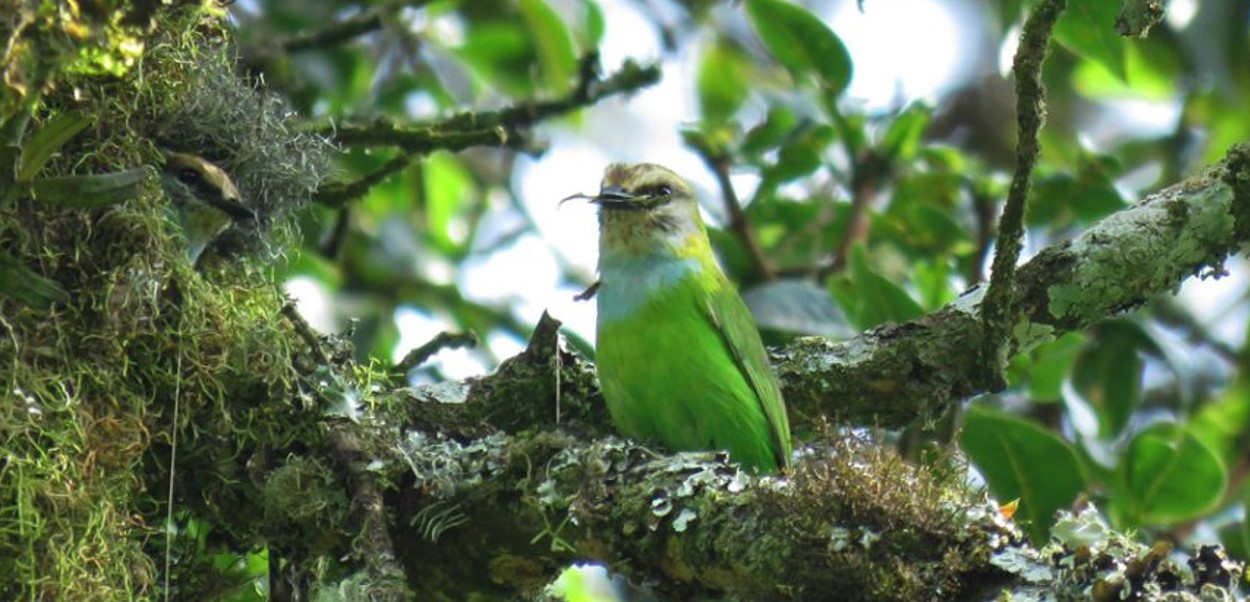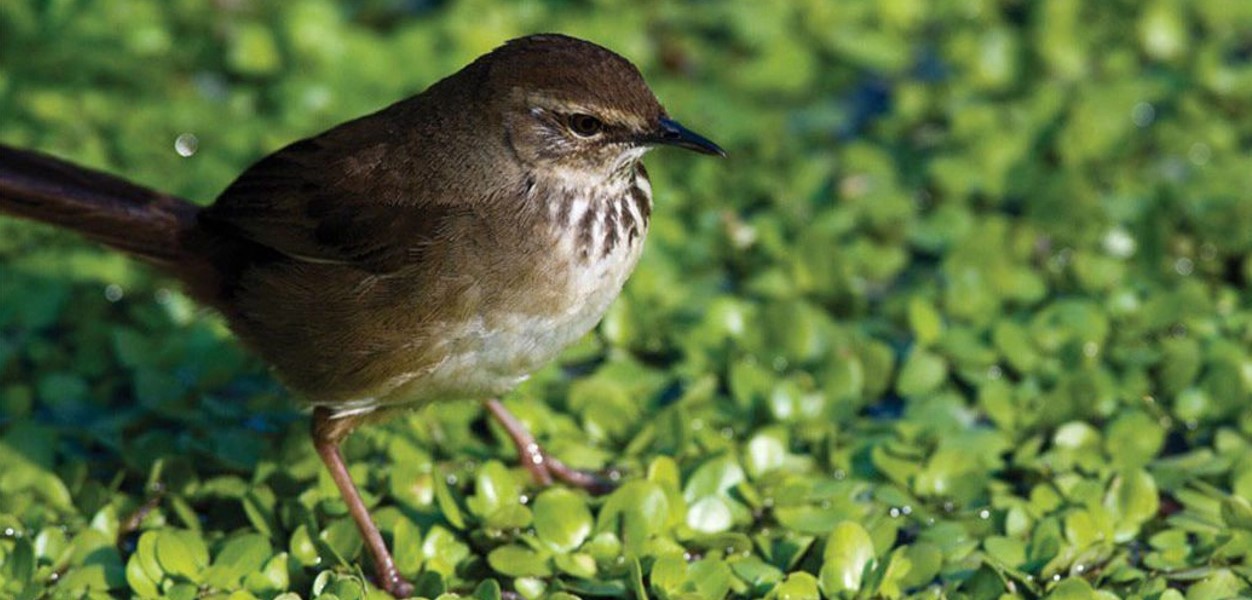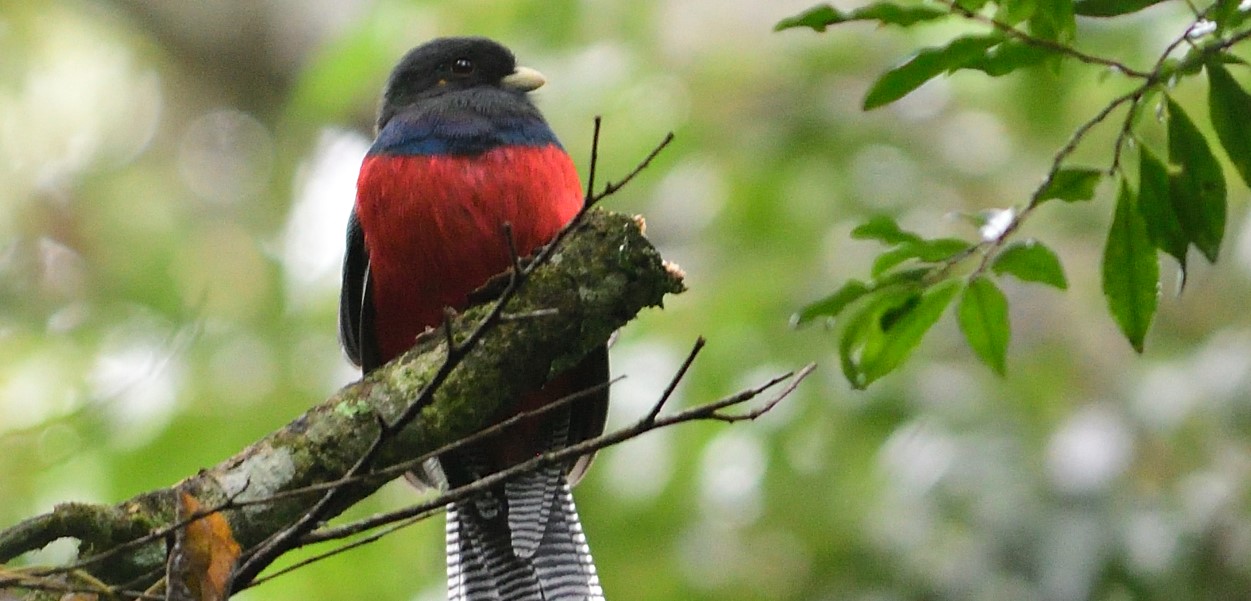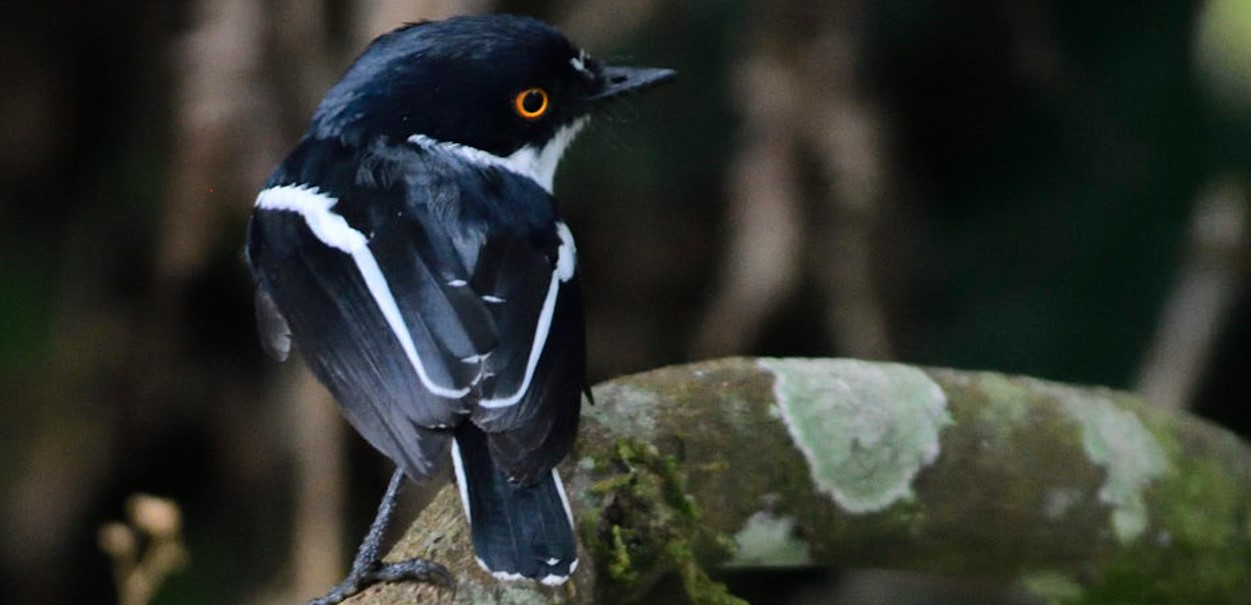
Bird watching in Bwindi Impenetrable forest
Bird watching in Bwindi Impenetrable Forest in Uganda is one of the most rewarding tourist experiences in Uganda. Bwindi Impenetrable Forest National Park is located in southwestern Uganda. This UNESCO World Heritage site spans roughly 321 square kilometres of both montane and lowland forest. It’s one of the richest ecosystems in Africa, providing a variety of habitats for birds, ranging from dense forests to wetlands.
Biodiversity of Bwindi Impenetrable National Park.
The park is renowned for its incredible biodiversity. It’s home to approximately half of the world’s population of critically endangered mountain gorillas and boasts a staggering 348 species of birds. This includes 23 Albertine Rift endemics, species found nowhere else in the world, and several species listed as globally threatened. Birdwatchers are particularly drawn to Bwindi for the chance to see these endemic and rare species, such as the Grauer’s (African Green) Broadbill. This small, vibrant bird is one of the most sought-after sightings in Bwindi. Shelley’s Crimsonwing: Another rare find, though easily seen in the Mgahinga Gorilla Park areas, this finch is one of Africa’s most elusive birds, and Grauer’s Swamp (Rush) Warbler, which prefers the marshy edges of the forest, is a treat for patient birders.
The park offers a variety of trails for birding, each with its own unique set of species:
The Main Trail: This is the most popular trail, where birders can spot species like the handsome Francolin, African Emerald Cuckoo, and White-tailed Blue Flycatcher while birding in Bwindi Impenetrable Forest National Park, Uganda.
Bamboo Zone: At higher elevations, the bamboo zone is the habitat of choice for the Handsome Spurfowl, White-starred Robin, Mountain Yellow Warbler, Cinnamon-bracken Warbler and more.
Mubwindi Swamp: This swampy area is great for spotting the Grauer’s Swamp (Rush) Warbler, African Water Rail and Red-chested Flufftail among others.

Bwindi is a haven for birds and a centre for conservation efforts. The park’s management works tirelessly to protect the habitat from threats like deforestation mostly threatened by the large tea gardens plus mushrooming factories and to promote sustainable tourism practices.
Bird species found in Bwindi Forest while birding in Bwindi Impenetrable Forest National Park, Uganda
Bwindi Impenetrable National Park is a haven for bird enthusiasts, offering a chance to observe a variety of bird species and their unique behaviours. Here are some notable birds and their behavioural characteristics:
- Grauer’s (African Green) Broadbill: Known for its vibrant green plumage, this bird is often seen fluttering in short bursts through the forest canopies. It’s a frugivore, feeding mainly on fruits and can be easily seen when nesting near the Mubwindi Swamp mostly in June, July and August.
- Handsome Spurfowl (Francolin): This ground-dwelling bird is vocal, especially at dawn and dusk. It feeds on seeds, insects, and other small invertebrates always seen feeding on the road between Ndego and Ruhija.
- Rwenzori Nightjar: Active during twilight and night, this elusive bird is known for its distinctive calls and aerial insect-catching abilities.
- Bar-tailed Trogon: With its slow and deliberate flight, the trogon is often seen perching motionless, scanning for insects and fruits.

- Black Bee-eater: This striking bird exhibits acrobatic flights to catch bees and other flying insects, often returning to the same perch to consume its prey. There are good spots for it around the Neck area between Ruhija and Buhoma.
- Western Green Tinkerbird: Recognisable by its repetitive thinking calls, this bird forages for fruits and insects on tree trunks and branches.
More Birds Species in Bwindi Impenetrable Forest National Park.
- Dwarf Honeyguide: It has a unique relationship with humans, guiding them to beehives and feeding on the wax after the honey is harvested.
- Fine-banded Woodpecker: Known for drumming on tree trunks, it searches for insects beneath the bark.
- Grauer’s Swamp (Rush) Warbler: It prefers marshy edges of the forest and is often heard before it’s seen, with a distinctive churring song.
- Red-faced Woodland Warbler: This active warbler flits through the understory, gleaning insects from leaves and branches.
- Neumann’s (Short-tailed) Warbler: A skulking bird that prefers dense undergrowth, it feeds on insects and is often detected by its song mostly near the rivers in the Buhoma Section of Bwindi Impenetrable National Park.
- Grauer’s Warbler: It likes the vines and tangles, moving actively in search of insects and occasionally joining mixed-species flocks.
- Black-faced (Mountain-masked) Apalis: This small bird exhibits a rapid, flitting movement through the foliage as it searches for insects.
- Purple-breasted Sunbird: Males display iridescent plumage to attract mates and are often seen hovering at flowers for nectar.
- Blue-headed Sunbird: It’s territorial and often seen chasing away intruders, feeding on nectar and occasionally on insects.
- Tit Hylia: A small, insectivorous bird.
- Chestnut-throated Apalis: A small bird with a chestnut throat.
- Rwenzori (Collared) Apalis: recognisable by its collar-like markings.
- Yellow-eyed Black Flycatcher: A flycatcher species that is endemic to Albertine Rift with a unique pale eye
- Chapin’s Flycatcher: Named after American ornithologist James Paul Chapin, can easily be seen in the Buhoma area and the Neck.
- Rwenzori Batis: A striking black-and-white bird.
- Strip-breasted Tit: A tit species with distinctive markings
These are just a few of the fascinating bird species you can encounter in Bwindi Impenetrable National Park. Whether you’re an experienced birder or a novice, the rich avian diversity of this ancient forest will leave you amazed.
Best birding spots when Bird watching in Bwindi Impenetrable Forest, Uganda
Bwindi Impenetrable National Park is a birdwatcher’s paradise, offering some of the best montane-forest birdwatching in Africa. Let’s explore the top birding spots within this lush Ugandan forest:
Birding in Ruhija Sector: A Montane Forest Haven
Ruhija lies in the eastern part of Bwindi Impenetrable Forest National Park. It is the quietest sector, with fewer gorilla trekkers, making it ideal for birdwatching. The sector’s impressive hills are home to endemic bird species. Ruhija hosts over 330 bird species, including 25 restricted species. 23 of these species are endemic to the Albertine Rift. Other birds are either migratory or forest rarities.
Bird Species in the Ruhija Sector
While exploring Ruhija, you may encounter the Grauer’s (African Green) Broadbill, Yellow-streaked and Eastern-Mountain Greenbul, Carruthers Cisticola, Mountain Buzzard, Ayres’s and Cassin’s Hawk-Eagle, African Shrike Flycatcher, Cinnamon-chested bee-eater, Dwarf Honeyguide, Doherty’s and Lagden’s Bush-shrike, Grey-headed (throated) Barbet, Red-chested Flufftail, White-headed Wood Hoopoe, Blue-headed Sunbird, Western Crested Guineafowl, Archer’s Robin-chat, Sooty Falcon, Sooty Flycatcher, Black-billed, Great Blue and Ross’s Turaco, Strange Weaver, Rwenzori Batis Sharpe’s Starling, Grey-chested Kakamega (Babbler), Barred Long-tailed Cuckoo Banded Prinia, Rwenzori Hill babbler, Albertine Boubou and many more. At 2,500 meters above sea level, Ruhija’s evergreen hills offer breathtaking views. Rwamunyonyi (at 2,607 m) is the highest point, known as the “hills of many birds.”
Mubwindi Swamp:
Explore the high-altitude swamp of Mubwindi, which contributes to the park’s name. This swamp attracts a variety of bird species. With the help of an experienced guide, you can spot species like the African Water Rail, Tambourine Dove, African Stonechat, Red-chested Flufftail, the machine gun calling Carruthers’s Cisticola, Cape Wagtail, Western Citril, African Black Dark and more.
Bird watching in Bwindi Forest, The Neck
Let’s explore birding in the Neck of Bwindi Impenetrable National Park. The neck while birding in Bwindi Impenetrable Forest National Park Uganda is a birder’s paradise. This narrow stretch of riverine forest along the northern park edges offers a unique and rewarding birdwatching experience: The Neck extends out from the main forest block, providing a different habitat for bird species. It offers birdwatching experiences as a half-day activity along the main road that runs through this area between the 2 sections of Bwindi – namely Ruhija and Buhoma.
Bird Species in The Neck of Bird watching in Bwindi forest.
Bird highlights include the African Black Duck, Cassin’s Flycatcher, Mountain Wagtail, and Dusky Blue Flycatcher, mostly along the rivers and ponds: The local forest water pool here is a reliable place to spot this duck, Chapin’s Flycatcher: Look out for this flycatcher species, The thick forest in the Neck is home to many skulking birds. While exploring, keep an eye out for other forest inhabitants, such as the flock-like Dusky Tit, Velvet Mantled Drongo, Red-headed Malimbe, Stripe Breasted Tit White-headed Woodhoopoe, and Grey Cuckooshrike. other birds here include the Joyful Greenbul, Ansorge’s, Honeyguide, Toro-olive, Red-tailed and Cabanis’s Greenbul, Black-billed Turaco, Fine-banded and Elliot’s Woodpecker, African Broadbill, Many-coloured Bush-shrike, Western Bronze-naped Pigeon, Yellow-spotted and Hairy-breasted Barbet, Scaly-breasted Illadopsis, Little-green Green Sunbird, Western Black Headed Oriole, Wallers, Stuhlmann’s and Slender-billed Starling, Black-throated Apalis and Black-faced Rufous Warbler, among the many bird species in the area.
Buhoma Sector
Buhoma, one of the sectors within Bwindi Impenetrable National Park, is a birdwatcher’s haven. Let’s explore the fascinating world of birding in this lush forest. Buhoma lies in the northern part of Bwindi Impenetrable National Park in Kanungu district, western Uganda. Buhoma is renowned for harbouring endangered mountain gorillas, but it’s also a top birding destination. It boasts over 360 recorded bird species, including Albertine Rift endemics, forest birds, and migratory species.
Bird species in Bwindi Buhoma Sector when birdwatching in Bwindi Forest.
Explore various birding trails in Buhoma, such as the Ivy River Trail, Waterfall Trail, Rushura Hill Trail, Habinyanja Trail, Muzabajiro Loop Trail, and Munyanga River Trail. Notable bird species in the Buhoma sector include the Red-headed Bluebill, Grey-winged and Blue-shouldered Robin-chat, White-headed Saw-wing, African Emerald Cuckoo, Yellow-throated, Speckled and Yellow-rumped Tinkerbird, Great Blue, Black-billed, and Ross’s Turaco, Thick-billed Seedeater, Bar-tailed Trogon, African Blue and White-tailed Blue Flycatcher, African Broadbill, and Waller’s Starling, among others.
More avian species include the Blue-headed Sunbird, Cape Wagtail, Klaas’s Cuckoo, Dark-capped (Common) Bulbul, White-throated Greenbul, Double-toothed Barbet, Northern and Pink-footed Puffback, African Dusky flycatcher, Ross’s Turaco, Black Bee-eater, African hill-Babbler, White-eyed slaty Flycatcher, Chapin’s Flycatcher, Crested Guinea Fowl, Rwenzori Batis, Black-faced Rufous Warbler, African Olive Pigeon, Neumann’s Warbler, Equatorial Akalat, White-bellied Robin-chat, Jameson’s Antpecker, Grey, Buff-throated and Black-throated Apalis, Bar-tailed Trogon, Mountain Illadopsis, Kakamega and Cabanis’s Greenbul, Bocages Bush-shrike, White-tailed Ant-thrush, Red-tailed Bristlebill, Black Bee-eater, Olive-green Camaroptera, White-browed Crombec, Brown-capped Weaver and many more.
Other Activities in Buhoma while Bird watching in Bwindi Impenetrable Forest, Uganda
Gorilla Trekking: Spend an hour with the endangered mountain gorillas.
Nature Walks: Get up close with wildlife.
Batwa Cultural Tour: Interact with the Batwa (pygmies) who once inhabited Bwindi.
Community Tours and Mountain Biking are also available.
Whether you’re a passionate birder or a curious traveller, Buhoma’s avian and other wildlife wonders await your discovery.
What is the best time to go bird watching in Bwindi Impenetrable forest, Uganda?
The best time to go birding in Bwindi Impenetrable National Park largely depends on your preferences for weather and bird activity. Here’s a breakdown of what you can expect throughout the year:
When to go bird watching in Bwindi during the dry Season (June to August and December to February):
These months offer easier trekking conditions, as the trails are drier and less slippery. Birds are easier to spot as the vegetation is less dense. Also, the main breeding season for many birds, so you might get to see some interesting courtship behaviours.
Wet Seasons (March to May and September to November):
The rainforest is lush, and food is abundant, attracting a wide variety of bird species in Bwindi. Migratory birds are present, adding to the diversity. Although the trails can be more challenging, the wet seasons are great for birdwatchers who don’t mind a bit of mud for the chance to see a greater number of species.
Peak Birding Months when birdwatching in Bwindi Impenetrable National Park
March and September are the best months for birdwatching in Bwindi. However, during these months you can enjoy a mix of resident and migratory birds, and the weather is relatively dry. This makes navigating the trails easier.
Ultimately, Bwindi offers good birdwatching opportunities year-round. The best time to visit may also depend on your travel schedule and whether you’re combining birding with other activities like gorilla trekking.

